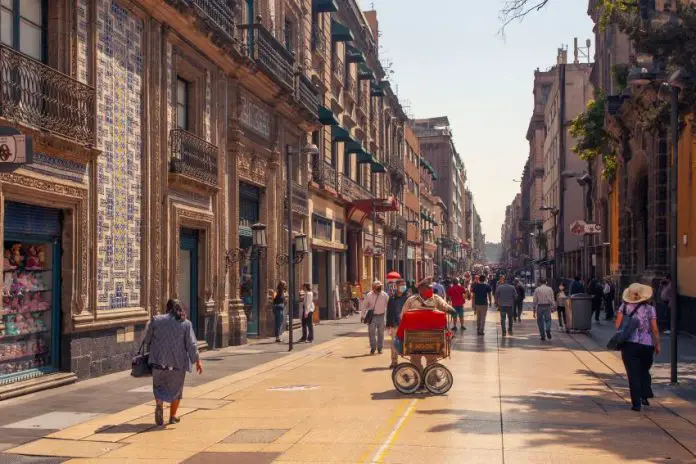Borough: Cuauhtémoc
Established: 1325, as Tenochtitlán
Location: 4 km northeast of the Angel de la Independencia
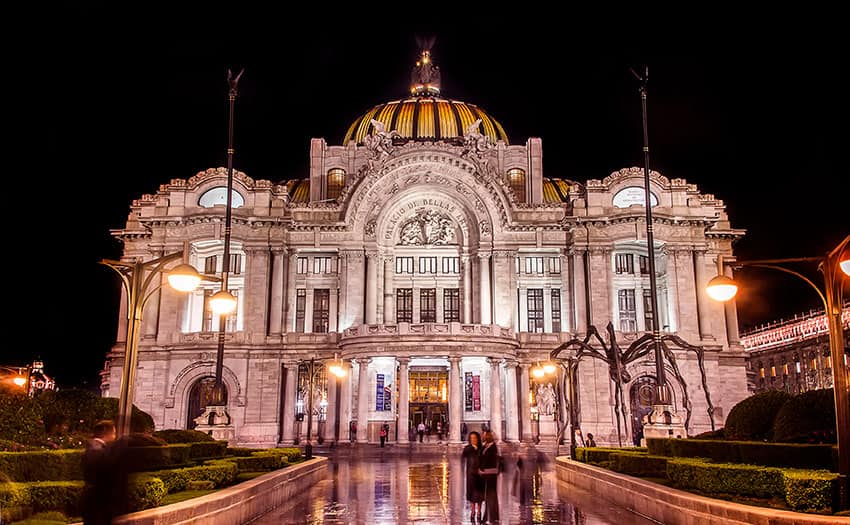
Who lives here
The heart not just of Mexico City but the country as a whole, the Historic Center is as culturally rich a district as they come. It’s home to a mix of long-term residents, including families, professionals and students. Many of the center’s inhabitants are involved in tourism and hospitality, as well as the arts.
The local demographic spans every age: young adults are drawn to the area for its vibrant culture and proximity to educational institutions, while many seniors have lived here for decades. Even though the wealth spectrum is broad, the majority of residents belong to low to middle-income brackets, working in service-related jobs catering to tourists.
It would be hard to narrow the lengthy list of notable figures who have settled in the heart of CDMX. Leaders from Moctezuma II to Porfirio Díaz to Emperor Agustín de Iturbide, as well as writers like poet Sor Juana Inés de la Cruz and journalist Leona Vicario all called the Historic Center home. For most of the 19th century, the National Palace, situated on the east side of the Zócalo, was the residence and office of Mexico’s president, a tradition resumed by former president López Obrador in 2019 and carried on by President Claudia Sheinbaum.
A brief history of the Historic Center
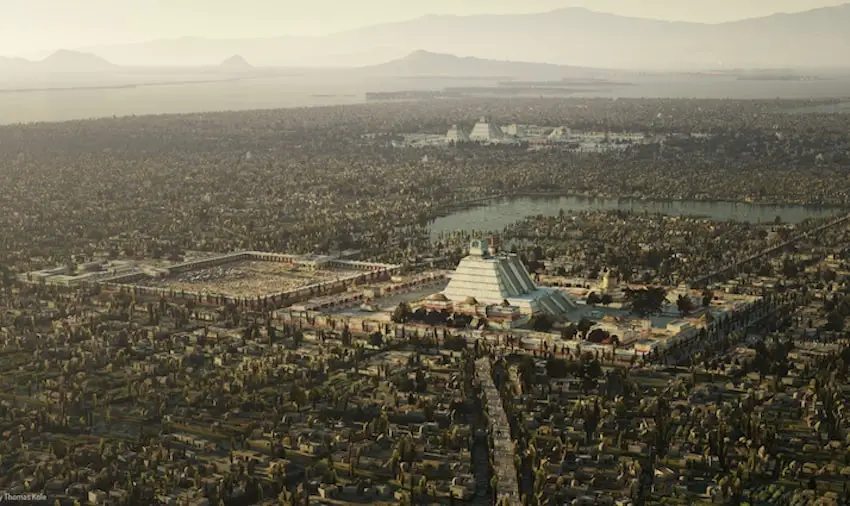
In many ways, the history of this area is the history of Mexico City itself. It was here that, according to legend, the Mexica stumbled upon the sign they’d been promised by the god Huitzilopochtli — an eagle eating a serpent on a cactus — and began building the great city of Tenochtitlán in 1325. Years later, following the Spanish conquest of the city in 1521, Hernán Cortés began to transform Tenochtitlán into Mexico City, using the existing Mexica structures as foundations for colonial buildings.
The colonial period saw what is now the Historic Center become the cultural and political heart of New Spain. What had been an open space in Tenochtitlán bordered by palaces became the central square of the new city — officially named Plaza de la Constitucion, it’s better known as the Zócalo and is still one of the largest squares in the world. The Historic Center officially became a neighborhood after Mexico gained its independence from Spain in 1821.
Significant restoration efforts in the 20th century have helped preserve the zone’s historic architecture and cultural heritage. In 1956, the Torre Latinoamericana was built, becoming Latin America’s tallest skyscraper. While the iconic building no longer competes with those we see on Paseo de la Reforma today, the towering structure has continued to showcase its resilience, defying one earthquake after another.
A guide to the Historic Center today
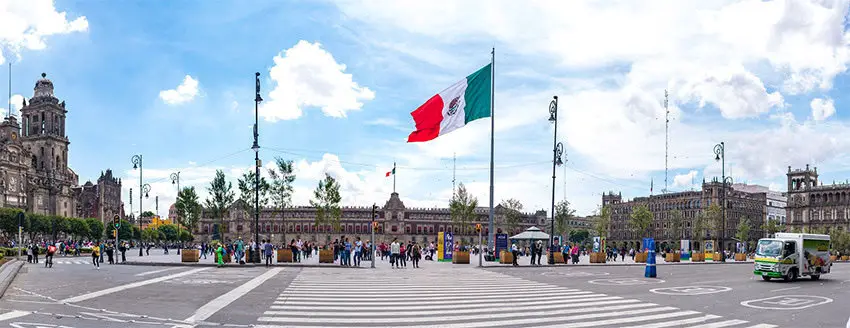
Breaking down Mexico City’s Historic Center with the accuracy it deserves could feasibly be a series in itself. In the interest of time, let’s stick to the basic facts: it’s crowded, colorful, chaotic and home to more monuments and museums than anywhere else in the country. It’s equal parts colonial and prehispanic. It’s where you go when you need something extremely specific, like new straps for your leather purse or a box of pastries big enough to feed an entire office building. The Historic Center is never quiet, calm or still, and that’s exactly why it’s never not inspiring.
If you look on a map, Mexico’s beating heart abstractly resembles the boxy shape of a warrior head you might see in an ancient Mexica mural. Its size and unique shape means that the Historic Center is surrounded by many of the other neighborhoods that make up the borough of Cuauhtémoc, including La Juárez, Doctores, Obrera, Tabacalera, Guerrero, Morelos and La Lagunilla, among others, and its east end borders the borough of Venustiano Carranza.
The neighborhood is dotted with major landmarks, including the Zócalo, Templo Mayor, Alameda Central, and pedestrian street Calle Madero. It’s one of the few parts of Mexico City where you can stand in front of a cathedral as magnificent as any in Europe while watching a shaman, fully suited in colorful feathers, body paint and a loincloth energetically cleanse a tourist with a dose of comal smoke. The contrast is striking, and plays well upon the significantly varied elements of Mexican culture.
When not staring at the eye-popping mass of people and architecture, you’re sure to be catcalled by any number of restaurant hosts promising the best chilaquiles of your life with a no-nonsense view of the church. Or, you can keep it moving with a quick indulgence at any of the delicious street carts that line the Alameda Central, the city’s oldest park.

The Historic Center is great if you love: Buzz from all angles. Equal parts spiritual and social, the ambiance here is like no other. This is not a place for the weary, and requires energy, patience, curiosity and eagerness. A visit to the Historic Center will always pay off tenfold.
What to do in the Historic Center
The Zócalo: Mexico City’s vibrant central square is an ideal place to get your bearings. You’re all but guaranteed to encounter a celebration here, as there’s an almost constant stream of events taking place, from food festivals to the annual Zocalo Book Fair to trampoline tournaments.
Museo Templo Mayor: An extensive archaeological site showcasing ruins of the Great Temple of Tenochtitlán can be seen without entering. Still, going in is worth both your time and money, especially if you can manage a guided tour.
Metropolitan Cathedral: Its architectural characteristics parallel that of Notre Dame and the Milan Cathedral. The fact that Mexico’s foremost church sits on a significant chunk of Templo Mayor brings an added element of mystery.

National Palace: Moctezuma’s palace was destroyed to build the structure we see today, which is now home to a number of important things, like Diego Rivera’s famous murals, a gang of very photogenic cats and the country’s current president.
Palacio de Bellas Artes: Perhaps the most emblematic symbol of CDMX, the Palace of Fine Arts is Porfiriato-era Art Nouveau-meets-Art Deco beauty that holds fascinating art exhibits and a magical opera theater.
Museo Nacional de Arte (MUNAL): From the Mexican masterpieces inside to the incredible structure they’re kept in, a visit to the National Museum of Art is a must for any art lover.
Museo Franz Mayer: Check out the remarkable collection of furniture, ceramics, and textiles from the colonial period to the 20th century, all sitting pretty inside a beautifully restored 18th-century museum.

La Casa de los Azulejos: This former mansion’s iconic facade is adorned with blue and white Talavera tiles, making it an Instagram hotspot. Push past the self-made models and see, or even dine in, the breathtaking Sanborn’s Cafe situated inside.
Calle Tacuba: The section of the longest street in the Americas that runs through the Historic Center is full of historical sites, museums, squares and cafes and perhaps the largest collection of eyewear salespeople anywhere on Earth.
Calle de Donceles: The busy street was once known as the site of a women’s mental hospital and is now a paradise of vintage bookshops, the Museum of Perfume (MUPE) and the gorgeous Teatro de la Ciudad.
Estanquillo Museum: Explore 20th-century Mexican pop culture through the personal collection of literary giant Carlos Monsivaís in this fun and eclectic museum on the corner of the always-bustling Calle Madero.
Where to eat in the Historic Center
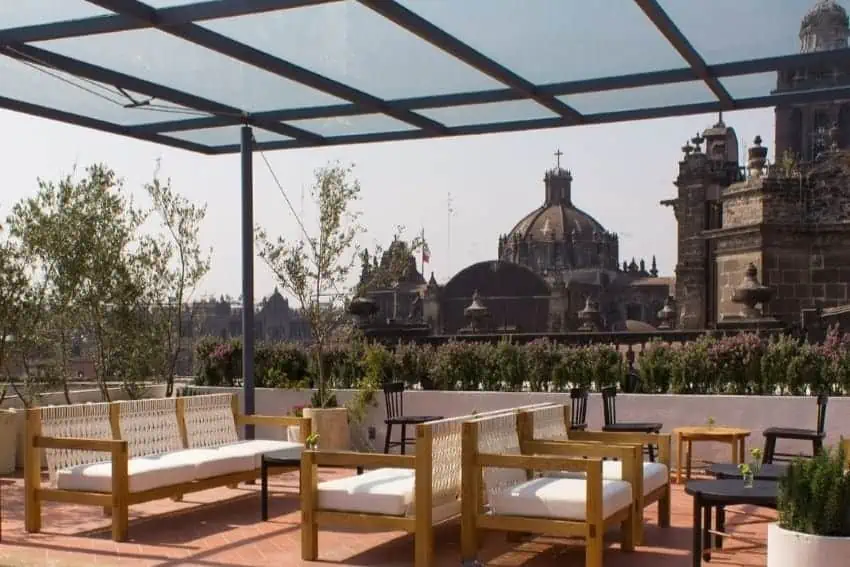
Pasteleria Ideal: Even if you’re not a sweets person, the organized chaos inside CDMX’s largest bakery is the real draw. Have your camera out and ready.
La Peninsular: No, you cannot visit the Historic Center without popping into a dozen cantinas. Might as well start at the oldest still running, La Peninsular, which opened its doors in 1872.
Balcón del Zócalo: Step into one of downtown’s most stylish and coveted restaurants, located in a colonial building that boasts sweeping views of the Zócalo and the Metropolitan Cathedral. While you’re there, try the filete de res en mole negro, a creative spin on an authentically Mexican dish.
La Opera: Perhaps the most refined of all Mexican cantinas, La Opera is the preferred lunch spot of government celebs and history-loving tourists scanning the ceiling in search of the remnants from Pancho Villa’s famous bullet.
Café de Tacuba: The historic café was established in 1912 and still retains a traditional, vibrant character with brightly tiled walls and dramatic archways. Nibble on a rich dish of enchiladas while a nearby guitarist belts out the most popular boleros.
Azulísimo – Comida Mexicana D.F.: Tradition at its finest, from ladies whipping up homemade tortillas at the entrance to colorful dishware to an extensive menu that, of course, includes various fried insects. This is one of multiple Azul restaurants found in CDMX.
Bar Mancera: The elegant interior and bowtie-clad waiters make this historic bar worth a midday mezcal. Its decor will take you back to the colonial era, thanks to graceful, dimly-lit chandeliers and historic paintings.
Roldán 37: Enjoy some truly authentic dishes in this charming, classically-styled restaurant on the lively street of the same name. You’ll feel like you’re at grandma’s house when you bite into the homemade chiles rellenos and tortilla soup.
Zinco Jazz Club: Who doesn’t want to finish a day of sightseeing in a cozy underground venue that was once the Bank of Mexico’s vaults? Enjoy live jazz and plenty of food and drink.
One hidden gem
The recently-revitalized Calle Regina stretches from Calle 20 de Noviembre to Calle Bolívar. The tiny street is lined with beautiful colonial buildings that reflect its rich history and is usually playing host to a vibrant celebration of some sort.
Bethany Platanella is a travel planner and lifestyle writer based in Mexico City. She lives for the dopamine hit that comes directly after booking a plane ticket, exploring local markets, practicing yoga and munching on fresh tortillas. Sign up to receive her Sunday Love Letters to your inbox, peruse her blog, or follow her on Instagram.
